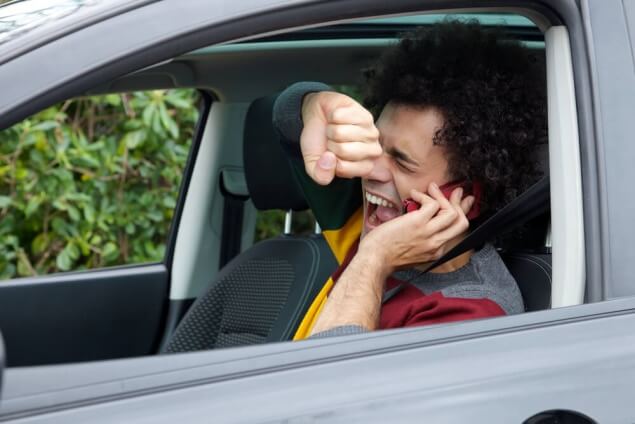
When we learn to drive, it often seems complicated and takes all our concentration just to operate the vehicle without stalling, or park the car without a multi-point turn. As we get used to the actions, it’s easier to drive almost without thinking, and we become more relaxed. But when our kids start to drive, it’s extra-important that their minds are wholly devoted to the job at hand: driving the car.
In the modern world, the mobile phone is ubiquitous, and it keeps us in constant contact with every part of our lives via text messages, phone calls and social media. It is our street directory and our portable media player too.
Mobile phone use while driving is illegal in Australia, but the statistics show that drivers are still using their phones when they shouldn’t be. While nobody is immune to the distraction of the phone, young drivers are at higher risk because of their greater use of mobile technology. They are also disproportionately involved in motor vehicle accidents.
Here are some statistics that might make them think twice about having their phone even turned on in the car.
Mobile phones caused more fatal accidents than not wearing seatbelts
Only last year, mobile phone use was the cause of more fatal accidents on the road than not wearing seatbelts. While this does demonstrate the effectiveness of seatbelts in preventing death on the road, it also shows that the ever-present mobile phone is not always beneficial.
Driver distraction increased by four times when texting
The most dangerous aspect of receiving, reading and sending text messages while driving is the amount of time drivers’ eyes are not directed to the road and surrounds. A study by the NRMA showed that the amount of time drivers’ eyes were looking away from the road increased by four times the average when they engaged in texting related activities. It was also found that drivers did not alter their speed when engaging in such actions, so if the vehicle is moving at 60 KM per hour, it could move almost a hundred metres in only six seconds. That’s a long way to travel without looking where you are going, but not quite long enough to read a message on their phone.
Other research shows that implications due to reading text messages included incorrect lane changes, wandering, and failure to see road signs, hazards, pedestrians and other road users. These are problems that could easily be avoided by switching off the phone. It’s also illegal to send or read text messages while driving in Australia.
Looking for car insurance? See if you can find a better deal by comparing here.
Young drivers feel confident driving and texting simultaneously
In an American study, 77% of young adults claim that they are either very or somewhat confident that they can safely drive and text at the same time. 55% of young driver’s claim it’s easy to drive and text. While young drivers may feel they can competently multitask these two activities, supporting research shows that those who text and drive spend approximately 10% of their driving time outside of their own lane.
Big penalties for drivers who breach mobile laws
As it stands the penalties for getting caught with a mobile while driving is quite substantial, and as history dictates, the fees will likely continue to rise.
In Queensland, a person can be fined over $340 and have three demerit points recorded, even if the phone is in use while stopped in traffic. For New South Wales, the fine is slightly less at $298 and three demerit points, unless caught in a school zone, whereby the fine dramatically increases to $397 and four demerit points. Victoria also has a large penalty with phone users being fined $443 and four demerit points, while in South Australia you can expect to pay $308 and lose three demerit points.
Most common types of crashes
According to a fact sheet released by Queensland Police, the most common types of crashes associated with mobile phone use include “run off the road” and “rear end”. While the fatality count is comparatively low, these kinds of crashes can cause major ramifications to the driver including injury, fines, and massive fees if under insured or not insured altogether, and potential psychological distress.
Driving is a huge responsibility, and distractions make the road less safe for everyone, so cutting down on any obvious temptation is on the right track to helping everyone get to their destination. Make you’re bank-balance safe also by comparing car insurance providers to help save your wallet while you save your skin. Safe driving!








